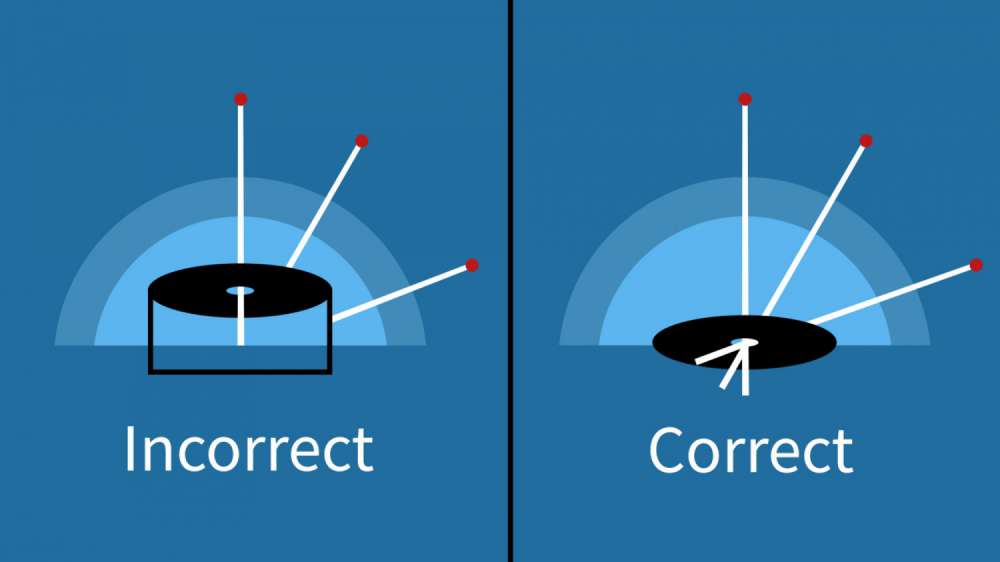Put as simply as possible, the entrance pupil of a lens should be aligned with the dome's center of curvature. That might seem a bit wordy, but it's not overly complex. The dome's center of curvature is the center of the dome's imaginary sphere.
Have a look at the visualiser above. When the entrance pupil is anywhere BUT the center, the light from objects towards the edge of the frame have to bend more to get through the entrance pupil. More refraction here means more distortion and chromatic aberrations.
However, if the entrance pupil is correctly positioned in the center then the light from an object doesn't have to bend at all to get through the entrance pupil, no matter where it is.

Why is this important?
An incorrectly positioned dome port will introduce significant amounts of distortion and chromatic aberrations to your images. This distortion gets worse towards the corners of the frame.
What is the entrance pupil?
The entrance pupil of a lens is the apparent position of the aperture stop when looking through the front. The word "apparent" is crucial. In most lenses, the glass in front of the aperture refracts light such that the aperture appears to be somewhere it's not. The apparent position is the only thing that matters here. This is why "entrance pupil" does not mean the same thing as "aperture stop".
Finding the entrance pupil of a lens is really simple. To find the entrance pupil all you have to do is look into a lens (from the front) and measure how far away the aperture appears to be.
Isn't it called the nodal point?
No. "Nodal point" is a term that is quite often used to describe the entrance pupil. This is incorrect for a number of reasons. The nodal points (there are two) are actually imaginary points, between which all refraction can be considered to occur. I won't go into to much detail, but suffice to say this is not what we want.
Many methods that claim to find 'nodal point' actually find the location of the entrance pupil, which thankfully is actually what we want to find. Unfortunately many articles still exist that use this incorrect phrase. This has led to conflicting terminology use, and in turn misunderstanding of the concepts involved.
